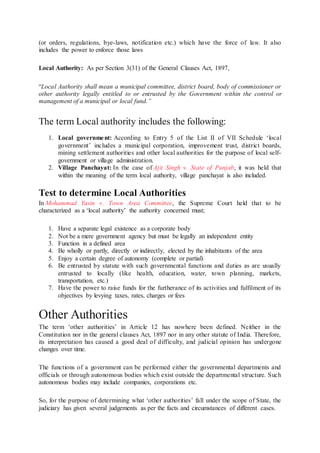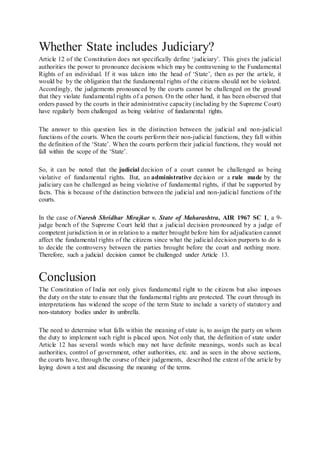Fundamental rights in the Indian Constitution apply to citizens against the state. Article 12 defines "state" broadly as the Union and state governments, legislatures, local authorities within India, and bodies under the government's control. Through judicial interpretations, courts have expanded the definition of state to include public bodies based on factors like substantial government financing, control, and performance of public functions. However, the state does not include the judiciary when performing judicial as opposed to administrative functions.




